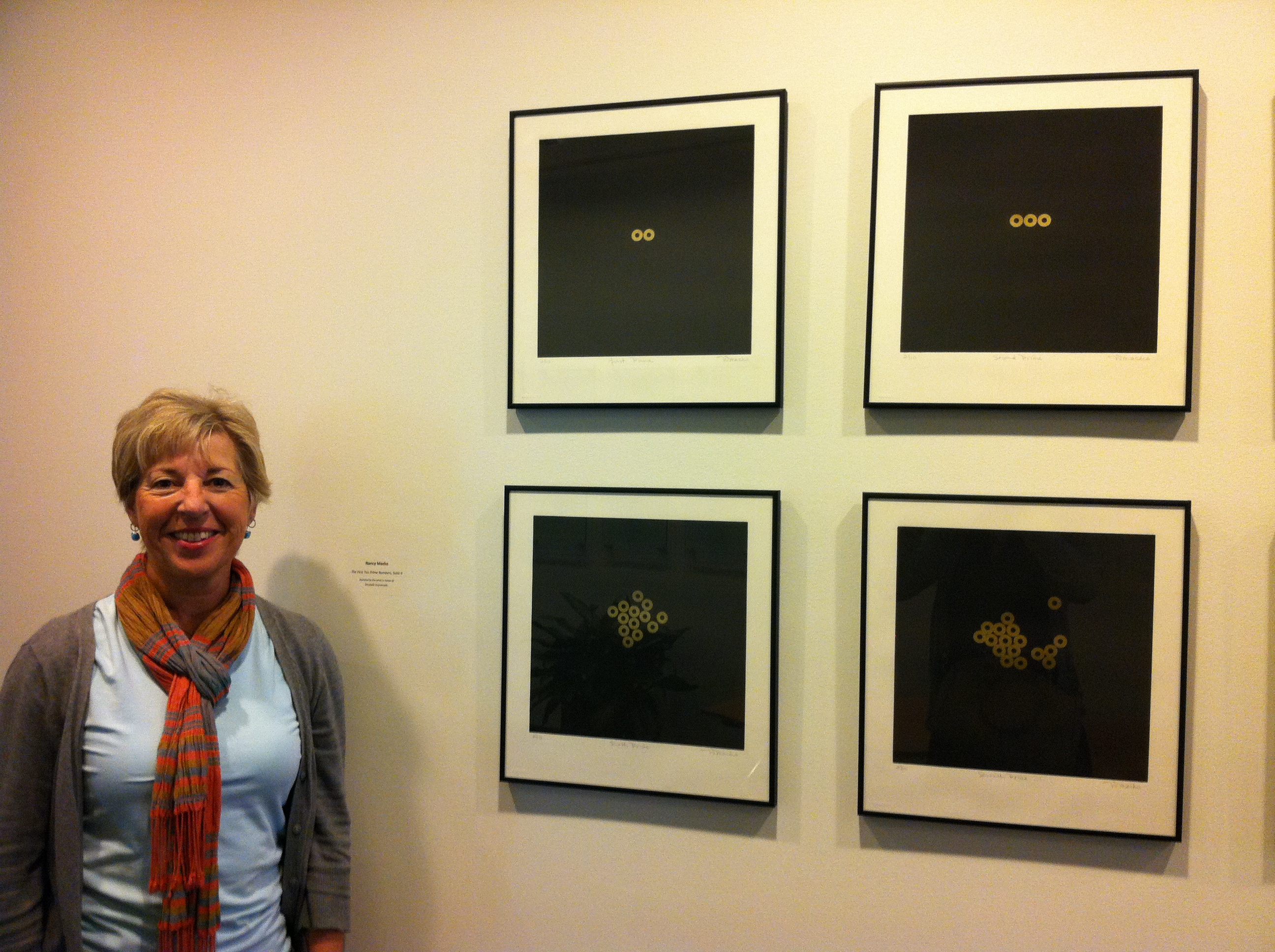
The Metropolitan Museum of Art in New York recently acquired two suites of prints by Scripps Professor of Art Nancy Macko. The First Ten Prime Numbers, Suite 1 and 2 explore the concept of prime numbers—positive natural numbers greater than one and divisible only by one and themselves.
“It is a dream come true and a great honor to have my work become part of the Met’s prestigious collection,” says Macko.
Macko holds the Mary W. Johnson Professorship in Teaching at Scripps. She specializes in studio art, media studies, and gender and women’s studies. A self-described “eco-feminist” artist, she makes work across diverse media that investigates the myriad connections between nature, art, science, and technology. Since 2003, Macko has been interested in exploring mathematical systems.
Each suite is an edition of 10 that comprises 10 works on paper printed by Mahaffey Fine Art LLC in Portland, Oregon. The First Ten Prime Numbers, Suite 1 (2004–09) features circular copper decals affixed to 30-by-22-inch cream-colored sheets. The number of disks on each sheet corresponds to one of the first 10 prime numbers; carefully arranged but also random, the resulting compositions mimic hive clusters (connecting these prints with Macko’s earlier work on bees), constellations, and even cells. Curator Patricia Albers notes, “Macko works by instinct, drawing upon the ideas of Zen composer and philosopher John Cage, who would maintain that every reinforcement is in exactly the right place, but that every other place would also be exactly right.”
“We are thrilled to add these quietly poetic works to the collection of the Metropolitan Museum of Art,” said Jennifer Farrell, the museum’s associate curator of contemporary prints.
The Metropolitan Museum first acquired Suite 1, and Macko offered Suite 2 as a gift to honor Sylvia Lark, her graduate professor and mentor in the printmaking program at the University of California, Berkeley. Lark had a significant influence on many artists during her decades at Berkeley; her own work was accessioned by the Metropolitan Museum in 1980. Clyde B. Jones III, senior vice president for institutional advancement at the museum, praised, “Not only will these prints add to our collection of work by contemporary female artists, as well as artists who engage connections between math and art, they honor Sylvia Lark.”

